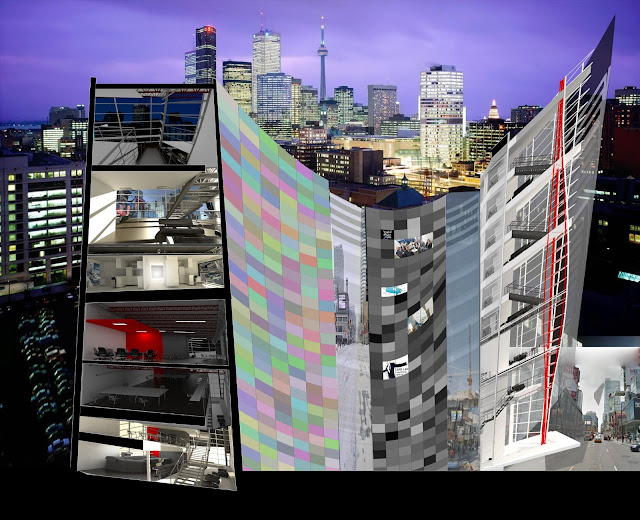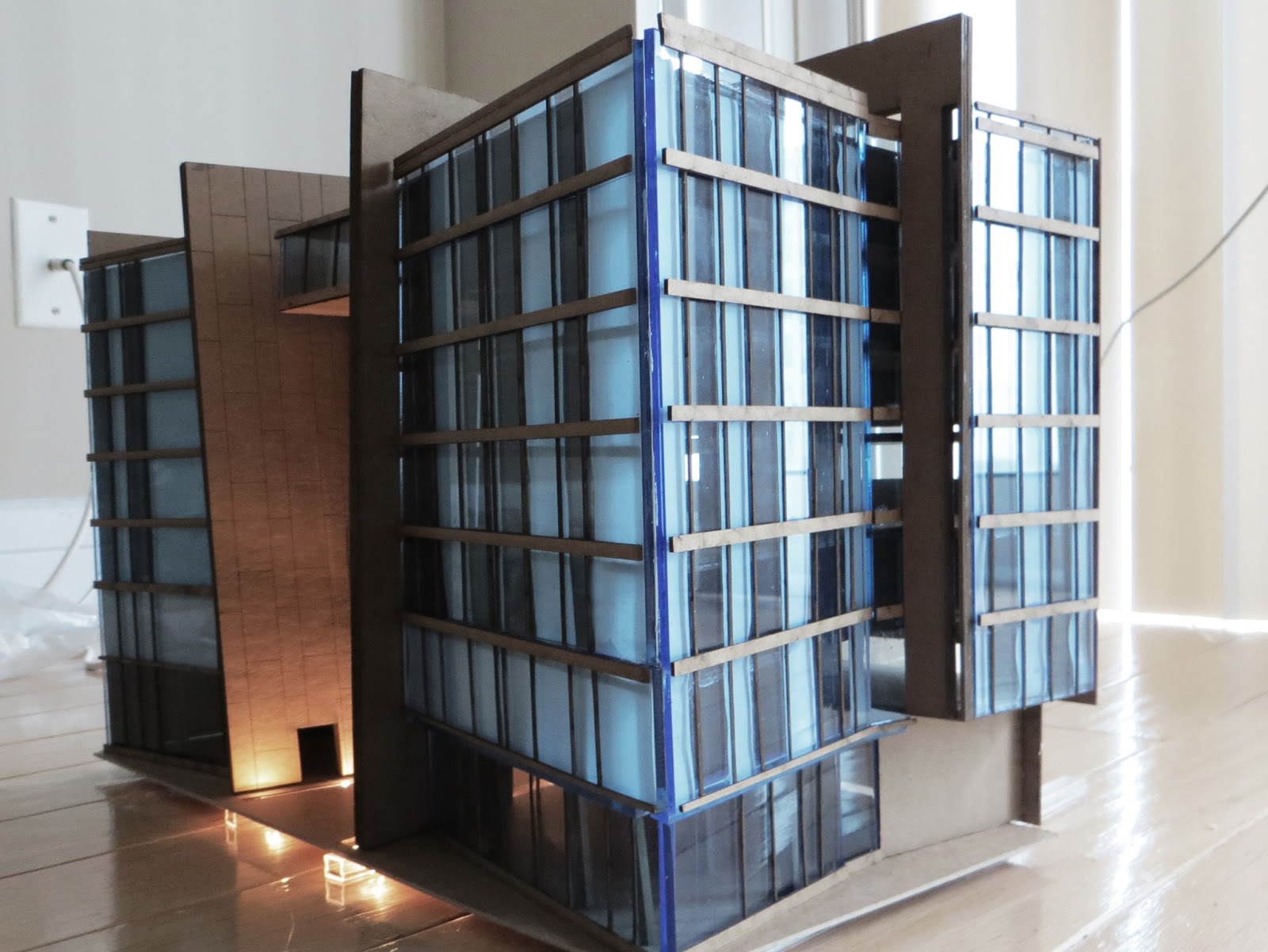Thursday, April 11, 2013
Wednesday, April 10, 2013
Tuesday, April 9, 2013
"Experimental" Experiential Section
Well obviously this is the first time we've all done one of these, so the idea of what exactly an experiential section is a little confusing... I've still trying to think of ideas to make the panels look like they can vary and change. Been experimenting with different opacities and motion blur..
Monday, April 8, 2013
Sunday, April 7, 2013
Progress
Labels:
awkward spaces,
elevations,
Mahan,
presentation drawings
Saturday, April 6, 2013
Trying lights with my model
Labels:
final,
Kate,
laser cutter,
lights,
Model,
presentation
Thursday, April 4, 2013
A Note on Experiential Sections
The experiential section is not to be taken lightly. Though the term has been coined by Geoff Thun from the University of Michigan, the notions behind the illustration are not new. The innovation behind it is the consolidation of many tangible and ephemeral architectural ideas in a single illustration.
As discussed earlier in studio, the experiential section is a single illustration that depicts the narrative experience through the major spaces of a building. It may consist of multiple elements but it must adhere to some unifying component(s) beyond the grounding of a section cut. Elements such as light, materiality, tectonics, scale, activity, etc. should all be conveyed if they are critical in making up the experience of progressing through the building.
An experiential section is NOT:
Conventions are not necessarily the mandate here however students should really be aware of what is legible and understood when examining an image. Please use the medium/media that is most appropriate to representing the space as well as within your comfort range (i.e. do not decide that pastels represent your space well and use them despite never having used them previously).
Gary likely shared this tumblr link with some of you already, however I have been asked to post it here for the sake of spurring the rest of the section to do well. These are NOT necessarily experiential sections. They do however offer stylistic and robust options for representation that you may consider as you develop your own project. I would also deter students from solely emulating what has been done by students in the upper year that may be posted online as that would be derivative with a very different set of conditions (i.e. vertical vs. horizontal, urban vs. rural, multi-programmed vs. single-use, etc.). You are to be better than what has preceded you. You are also capable of greatness on your own. Think through what is unique to your design and you will find proceeding with the experiential section significantly easier.
As discussed earlier in studio, the experiential section is a single illustration that depicts the narrative experience through the major spaces of a building. It may consist of multiple elements but it must adhere to some unifying component(s) beyond the grounding of a section cut. Elements such as light, materiality, tectonics, scale, activity, etc. should all be conveyed if they are critical in making up the experience of progressing through the building.
An experiential section is NOT:
- A sectional perspective through the building
- A montage of perspectives
Conventions are not necessarily the mandate here however students should really be aware of what is legible and understood when examining an image. Please use the medium/media that is most appropriate to representing the space as well as within your comfort range (i.e. do not decide that pastels represent your space well and use them despite never having used them previously).
Gary likely shared this tumblr link with some of you already, however I have been asked to post it here for the sake of spurring the rest of the section to do well. These are NOT necessarily experiential sections. They do however offer stylistic and robust options for representation that you may consider as you develop your own project. I would also deter students from solely emulating what has been done by students in the upper year that may be posted online as that would be derivative with a very different set of conditions (i.e. vertical vs. horizontal, urban vs. rural, multi-programmed vs. single-use, etc.). You are to be better than what has preceded you. You are also capable of greatness on your own. Think through what is unique to your design and you will find proceeding with the experiential section significantly easier.
Subscribe to:
Posts (Atom)









.JPG)





.jpg)



